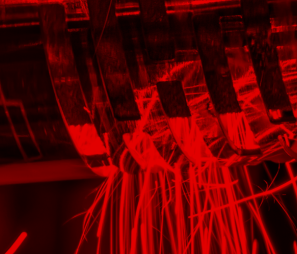Adaptive material paves way for 4D printed robot ligaments : A hybrid material that can reconfigure itself multiple times into different shapes when exposed to light and heat has been developed by Pittsburgh researchers.
The team believes the material could pave the way for ‘4D printing’, allowing for the creation of devices that adapt to their environment and alter their behaviour in the presence of different stimuli.
“In 4D printing, time is the fourth dimension that characterises the structure of the material; namely, these materials can change shape even after they have been printed, explains Dr Anna Balazs of the University of Pittsburgh.
The ability of a material to morph into a new shape alleviates the need to build a new part for every new application, and hence, can lead to significant cost savings,”.
“The challenge that researchers have faced is creating a material that is both strong and malleable and displays different behaviour when exposed to more than one stimulus.”
Light-responsive fibres are embedded into a temperature-sensitive gel to create a new material that displays distinctly different behaviour in the presence of light and heat.
The researchers say the material can be structured so that it only adapts to outside stimuli in localised areas. This allows it to be tailored in ways that would not be possible by simply heating the sample.
The technique could allow for the creation of devices such as joints for flexible robots that bend and unbend when exposed to light.
“Robots are wonderful tools, but when you need something to examine a delicate structure, such as inside the human body, you want a ‘squishy’ robot rather than the typical devices we think of with interlocking gears and sharp edges,” said Balazs.
“This composite material could pave the way for soft, reconfigurable devices that display programmed functions when exposed to different environmental cues.”
Future research into the material will focus on tailoring the arrangements of the partially-embedded fibres to create hand-like structures that can grip objects.
Manufacturing & Engineering Magazine | The Home of Manufacturing Industry News















